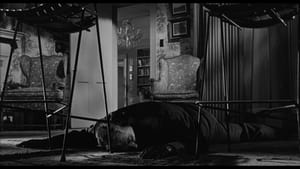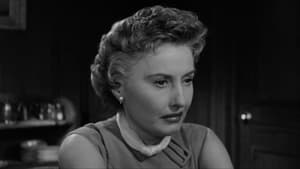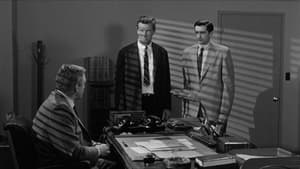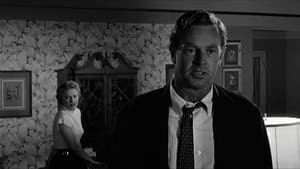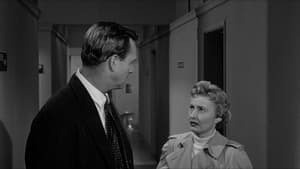Contact: info@alwanfilm.com
Video Sources 0 Views
- Watch trailer
- Crime of Passion


Synopsis
Table of Contents
ToggleNoir Intrigue in Color: A Review of Crime of Passion 1956 Colorized

Introduction
Crime of Passion 1956, a classic noir thriller, originally graced the silver screen in timeless black and white. Now, with advancements in technology, this captivating tale of obsession and deceit has been revitalized through colorization. In this comprehensive review, we delve into the essence of Crime of Passion 1956, its transition to color, and the enduring impact it holds in the annals of cinema.
Check The Full Colorized Movies List
Check Our Colorized Movies Trailer Channel
Understanding Crime of Passion 1956 Colorized: Director, Cast, and Genre
Directed by Gerd Oswald, Crime of Passion 1956 stands as a testament to the mastery of noir storytelling. Oswald orchestrates a mesmerizing narrative, drawing upon the talents of Barbara Stanwyck, Sterling Hayden, and Raymond Burr. Their performances breathe life into the genre, weaving a tale of moral ambiguity and psychological intrigue that captivates audiences to this day.
Barbara Stanwyck, a Hollywood icon renowned for her portrayals of strong, complex women, delivers a tour de force performance as Kathy Ferguson, a woman consumed by ambition and desire. Sterling Hayden complements her perfectly as Bill Doyle, the hard-nosed police detective caught in Kathy’s web of deception. Raymond Burr rounds out the cast with his portrayal of newspaper columnist Bill Doyle, adding depth and nuance to the film’s ensemble of characters.
Crime of Passion 1956 transcends the boundaries of traditional genre classifications, blending elements of noir, drama, and psychological thriller to create a cinematic experience that defies easy categorization. Oswald’s direction imbues the film with a sense of urgency and suspense, keeping audiences on the edge of their seats from start to finish.
Exploring the World of Crime of Passion 1956 Colorized: Plot and Characters
Crime of Passion 1956 unfolds against the backdrop of post-war America, where ambition and desire collide in a dangerous game of manipulation. Barbara Stanwyck’s Kathy Ferguson is a woman driven by an insatiable hunger for power and recognition, willing to sacrifice everything to achieve her goals. Her marriage to a police detective, portrayed by Sterling Hayden, sets the stage for a riveting exploration of love, betrayal, and the lengths one will go to fulfill their desires. Raymond Burr’s portrayal of newspaper columnist Bill Doyle adds layers of complexity to the intricate web of relationships within the film, as his character becomes entangled in Kathy’s schemes.
As the plot unfolds, tensions rise, and the true depths of Kathy’s manipulation are revealed. Her calculated actions have far-reaching consequences, leading to a dramatic climax that leaves audiences questioning the nature of love, loyalty, and morality.
The Art of Film Colorization
Film colorization has undergone a transformative journey since its inception, breathing new life into classic films and offering audiences a fresh perspective on cinematic masterpieces. With Crime of Passion 1956, the transition to color opens a window into the vibrant world of 1950s America, enhancing the visual allure of the film while preserving its noir essence.
By infusing the film with color, audiences are transported back in time to an era defined by bold fashion, sleek cars, and neon-lit streets. The rich, saturated hues of the colorized version evoke a sense of nostalgia, immersing viewers in the atmosphere of post-war America and heightening the emotional impact of the film’s narrative.
Early Colored Films: A Brief History
The emergence of color in film marked a pivotal moment in cinematic history, ushering in a new era of storytelling and visual expression. From the earliest experiments with hand-tinted frames to the advent of Technicolor, the evolution of colorization techniques has left an indelible mark on the medium, shaping the way we perceive and experience cinema.
In the early days of colorization, filmmakers experimented with various techniques to bring their visions to life on screen. Hand-painted frames, tinting, and toning were among the methods used to add color to black-and-white films, laying the groundwork for the advanced digital processes that would follow in the decades to come.
Crime of Passion 1956 and Its Early Colored Version
The decision to release Crime of Passion 1956 in a colorized format speaks to the enduring legacy of the film and its relevance in the modern cinematic landscape. By embracing colorization, audiences are afforded the opportunity to immerse themselves in the rich tapestry of 1950s aesthetics, elevating the viewing experience to new heights of cinematic splendor.
Colorization breathes new life into Crime of Passion 1956, allowing audiences to experience the film in a fresh and vibrant way. The transition to color enhances the visual appeal of the film while preserving its noir sensibilities, creating a viewing experience that is both immersive and captivating.
The Debate Over Film Colorization
While the advent of colorization has sparked debate among purists and cinephiles alike, its role in preserving and revitalizing classic films cannot be understated. By breathing new life into timeless tales such as Crime of Passion 1956, colorization ensures that these cinematic treasures remain accessible to audiences for generations to come.
Purists argue that colorization detracts from the original aesthetic and artistic integrity of black-and-white films, altering the filmmaker’s original vision and compromising the film’s historical significance. However, proponents of colorization maintain that it offers a fresh perspective on classic films, allowing audiences to experience them in a new and exciting way.
Examining Crime of Passion 1956 as an Early Colored Film
The transition to color offers a fresh perspective on Crime of Passion 1956, allowing audiences to rediscover the film’s visual splendor while retaining its noir sensibilities. From the vibrant hues of Kathy’s world to the shadowy depths of moral ambiguity, colorization enhances the film’s narrative impact, inviting viewers to immerse themselves in its timeless tale of love, betrayal, and redemption.
Influence and Legacy: Crime of Passion 1956 Colorized’s Impact on Cinema
Crime of Passion 1956 has left an indelible mark on the cinematic landscape, influencing generations of filmmakers and storytellers with its gripping narrative and unforgettable characters. From its iconic performances to its masterful direction, the film continues to inspire artists and audiences alike, reaffirming its status as a true classic of the noir genre.
Director’s Cinematic Legacy: Beyond Crime of Passion 1956 Colorized
Gerd Oswald’s direction of Crime of Passion 1956 stands as a testament to his mastery of the noir genre and his ability to craft compelling narratives that resonate with audiences on a profound level. Beyond this film, Oswald’s legacy endures through his contributions to cinema, shaping the course of filmmaking and inspiring future generations of storytellers.
Themes Explored in Crime of Passion 1956 Colorized
At its core, Crime of Passion 1956 delves into the timeless themes of ambition, desire, and the human condition. Through its exploration of love, betrayal, and moral ambiguity, the film offers a poignant reflection on the complexities of human relationships and the consequences of our actions.
Reception and Controversy Surrounding Crime of Passion 1956 Colorized
Upon its release, Crime of Passion 1956 garnered critical acclaim for its gripping narrative, captivating performances, and stylish direction. However, the decision to colorize the film has sparked debate among cinephiles, with some embracing the opportunity to experience the story in a new light, while others argue that colorization detracts from the film’s original aesthetic and artistic integrity.
Where to Watch Crime of Passion 1956 Colorized Online
Crime of Passion 1956 is available for streaming on various platforms, allowing audiences to experience this classic noir thriller in the comfort of their own homes. From digital rentals to streaming services, the film remains accessible to viewers around the world, ensuring that its legacy endures for generations to come.
FAQs About Crime of Passion 1956 Colorized
Q: Is colorization faithful to the original vision of Crime of Passion 1956?
- A: While colorization offers a fresh perspective on the film, some purists argue that it detracts from the original aesthetic and artistic integrity of the black-and-white version. Ultimately, the decision to embrace colorization is a matter of personal preference.
Q: What themes are explored in Crime of Passion 1956?
- A: Crime of Passion 1956 delves into themes of ambition, desire, love, betrayal, and moral ambiguity. Through its exploration of these universal themes, the film offers a thought-provoking reflection on the complexities of the human experience.
Conclusion
Crime of Passion 1956 remains a timeless classic of the noir genre, captivating audiences with its gripping narrative, unforgettable characters, and stylish direction. Whether experienced in its original black-and-white format or through the lens of colorization, the film continues to resonate with viewers, offering a poignant reflection on the human condition and the enduring allure of cinematic storytelling. As we reflect on the enduring legacy of Crime of Passion 1956, we are reminded of the power of cinema to transport us to worlds beyond our own and to explore the depths of the human soul with unrivaled depth and complexity.





